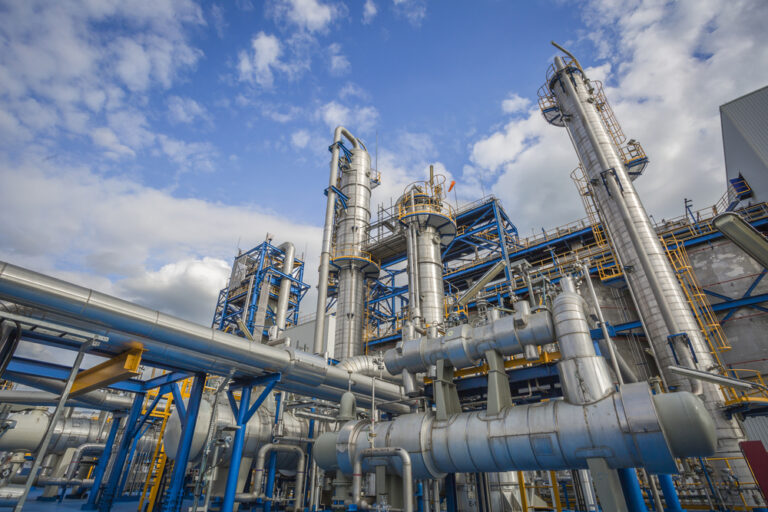A decision in Port Hamilton Refining and Transportation LLP v. EPA by the U.S. Court of Appeals for the 3rd Circuit found that a Clean Air Act (CAA) Prevention of Significant Deterioration (PSD) Permit wasn’t required to restart operations at a St. Croix, U.S. Virgin Islands, refinery, even though the facility has been idle since 2012. The court concluded that the EPA exceeded its authority and that the “unambiguous” language of the CAA prevents the Agency from reclassifying the refinery as a “new” facility under the PSD Permit program.

“The court said the law ‘unambiguously limits’ the permitting program to ‘newly constructed or modified facilities.’ Since the refinery in question was merely idled, the EPA can’t force the owner to obtain the permit, the court said,” says Reuters. “The decision removes a potentially costly hurdle in Port Hamilton’s path as it considered reopening the facility, which was built in the 1960s and idled in 2012 by a previous owner following pollution violations and significant financial losses.”
Background
The original owner filed for bankruptcy, and the refinery was purchased by Limetree Bay Terminals in 2016.
“Limetree requested guidance from EPA regarding whether a PSD permit would be required to restart operations,” Kilpatrick Townsend & Stockton LLP says in a Lexology article. “In 2018, EPA, applying the Reactivation Policy, concluded that a PSD permit would not be required as the Refinery had been ‘idled’ and not shut down. The Refinery was allowed to resume operations under a plantwide applicability permit issued by EPA in 2018. After millions of dollars in spending, Limetree brought the Refinery back online in February 2021 and promptly faced a series of air and water malfunction and noncompliance events. These events included flaring incidents resulting in oil and water discharging on nearby homes and excess emissions of hydrogen sulfide over multiple days, resulting in a closure of nearby schools. Eventually, EPA issued a Section 303 emergency order for Limetree to immediately cease all operations. This was followed by Limetree filing for bankruptcy in July 2021.”
Port Hamilton purchased the refinery in December 2021 and requested EPA guidance regarding the facility’s permitting status. The EPA issued a Final Determination Letter in November 2022 that concluded the facility would require a PSD Permit.
In that letter, the EPA stated “that the Refinery was permanently shut down in 2012 and that restarting the Refinery qualifies as construction of a new major stationary source under the federal PSD permitting regulations applicable in the U.S. Virgin Islands.”
PSD Permit program
“PSD applies to new major sources or major modifications at existing sources for pollutants where the area the source is located is in attainment or unclassifiable with the National Ambient Air Quality Standards (NAAQS),” according to the EPA. “It requires the following:
- installation of the "Best Available Control Technology" (BACT);
- an air quality analysis;
- an additional impacts analysis; and
- public involvement.”
BACT equipment is expensive. The CAA specifically states that “[n]o major emitting facility in which construction is commenced after August 7, 1977, may be constructed in an attainment area without a PSD permit,” with construction defined to include major modifications to a major emitting facility.
Whether a facility has been temporarily idled or shut down is determined by the EPA’s Reactivation Policy.
“As originally set forth by EPA, the Reactivation Policy was a simple concept - if a source could demonstrate, to the satisfaction of the Administrator, that its two-year (or longer) shutdown was not intended to be permanent, PSD review would not apply to its reactivation,” Kilpatrick Townsend & Stockton adds.
3rd Circuit decision implications
The decision states:
“The Clean Air Act unambiguously limits the PSD program’s application to newly constructed or modified facilities. The Refinery is not new and has not undergone a ‘modification’ as the Act defines that term.”
The decision further determines that the CAA language very clearly defines construction and modification and limits the requirements for PSD permitting requirements to facilities constructed (or modified) in an attainment area after August 7, 1977.
The court also rejected the Chevron defense the EPA asserted in a footnote, providing further evidence that the Chevron defense is on the way out.
Other implications from the decision include:
- Limiting the PSD program’s reach to two conditions: modification or construction.
- It also calls into question the validity of the EPA’s Reactivation Policy.
- Although the EPA defense also mentioned environmental justice concerns with the facility, the court didn’t address these issues at all, which continues to “support doubts raised about the resilience of Environmental Justice goals when faced with the limits of statutory and regulatory authority,” continues Kilpatrick Townsend & Stockton.
With the EPA’s increased focus on environmental justice initiatives, facilities, particularly newly constructed facilities, in communities designated as overburdened can expect hyper-vigilance from the Agency.
Considering the Port Hamilton refinery’s less than stellar reputation, this victory may be short-lived.
“The Refinery will remain in EPA’s crosshairs long into the future, with scrutiny of every step or misstep,” the Kilpatrick Townsend & Stockton article speculates. “EPA, in fact, has an entire page on its website devoted solely to the Refinery air, wastewater and waste disposal obligations. So, the conclusion of the Refinery’s story is still to be written.”